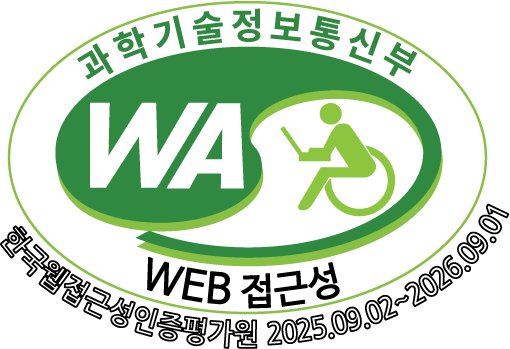SW가 점차 중요해지고 있다. SW산업이 국가경제에서 차지하는 부가가치 및 고용비중이 지속적으로 증가하고 제조업 대비 생산성이 높으며, 수출도 빠르게 증가하고 있다. 뿐만 아니라 전통 제조 및 서비스업 등 전 산업에서 SW 투자도 증가하고 있다. 특히 금융, 의료, 자동차, 기계, 인프라 산업에 속한 기업은 활발한 SW 투자를 통해 제품과 서비스의 가치를 개선하고 노동생산성을 높이고 있다. 하버드대 마이클포터(Michael Porter)교수가 제시한 국가경쟁력 결정모델인 ‘다이아몬드 모델’을 활용하면 국가경쟁력 강화를 위한 SW의 역할은 다섯 요인(SCALE)으로 설명할 수 있다. 첫째, SW를 이용하여 국가 혁신의 신속성(Speed)을 높일 수 있다. 둘째, 오픈소스 등 SW를 중심으로 다양한 이해관계자가 모여 협력적(Cooperation) 국가 혁신 생태계를 조성할 수 있다. 셋째, SW는 무형의 재화로서 서비스 형태로 실시간 전달되기 때문에 시장 환경 변화에 유연하게 적응(Adaptation)할 수 있다. 넷째, SW는 데이터를 학습하면서 지속적으로(Longevity) 혁신 경쟁을 촉발한다. 다섯째, SW는 플랫폼화하여 다양한 연관 산업의 신제품 및 서비스로 확장(Expansion)된다. SW 투자를 통해 국가 및 기업은 세 가지 차원의 이익을 얻을 수 있다. 첫째, 제품 및 서비스의 구조를 고도화할 수 있다. 최근 SW중심 자동차(Software Defined Vehicle)의 사례에서 볼 수 있듯이 기존에 독립적으로 설계된 하위 시스템을 SW 플랫폼을 중심으로 통합함으로써 차량의 전체 기능을 통합·최적화하고 자율주행, 인포테인먼트 등 지능화된 기능을 손쉽게 탑재할 수 있게 되었다. 둘째, 조직 구조 및 운영 방식을 효율화할 수 있다. 독립적인 사업부와 이를 구성하는 전문부서로 이뤄진 사일로(Silo)화 된 전통 조직구조가 전사 공통의 SW 플랫폼을 기반으로 신설과 폐지가 자유롭고 내외부 조직과의 협력이 원활한 조직으로 바뀌고 있다. 셋째, SW는 새로운 수익 창출을 가능케 한다. 그동안 제품과 서비스 판매에 따른 일회적인 현금 창출이 보편적이었다면 SW를 활용해 버저닝, 번들링, 구독료 등 가격 책정의 유연성이 높아졌다. SW가 지닌 혁신특성을 극대화하기 위한 정책 제언은 다음과 같다. 우선 우리 중소기업이 점차 빠르게 변하는 시장 환경과 혁신의 속도에 따라갈 수 있도록 지원하는 SW 역량 강화 정책 개선이 필요하다. 또한 오픈소스 활용 등 협력적 혁신 문화 조성에도 더욱 노력할 필요가 있으며 SW를 통한 업간 융합을 위한 연구개발(SDX), SW 융합인재양성, 제도정립 등이 필요하다. Executive Summary Advancements in artificial intelligence (AI) technology have accelerated, particularly following the launch of ChatGPT, which has triggered a competitive race in the development of large language models (LLMs). The performance of currently available AI models has already surpassed human capabilities in certain domains, leading to a rapid expansion in their areas of application. General-purpose AI, especially those based on generative AI, is now being utilized across various industries, including manufacturing, healthcare, finance, and education. However, while AI-based services offer numerous benefits, the increased accessibility of high-performance AI has also raised concerns about new risks. As a result, alongside existing discussions on AI reliability, accountability, and ethics, "AI safety" has become an increasingly critical issue. Given that risks such as malicious use and malfunctions are already causing real harm, there is an urgent need for measures to ensure AI safety. Governments, corporations, and other stakeholders are working to ensure the safety of AI by identifying risk factors, establishing evaluation criteria, and developing measures for the safe development and deployment of AI, as well as for responding to potential risks. Recent studies have classified risk factors based on accident cases and possible scenarios. However, since each study presents different classification, further discussion is needed to establish a common AI safety evaluation framework. The United States, the United Kingdom, and Japan are addressing safety of AI through dedicated agency, which focus on AI risk research, risk assessments, and the development of standards for the safe creation and implementation of AI systems. Notable examples include the AI Risk Management Framework (USA) and the Science Report on AI Safety (UK), both of which propose strategies for addressing AI-related risks. Korea also plans to address AI safety demands through the establishment of its own AI safety institute. This report aims to organize the concepts related to AI safety, summarize the risk factors identified in recent studies, and analyze these factors along with real-world cases to offer policy implications for future AI risk response strategies.



